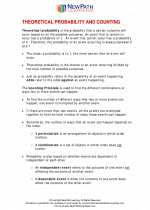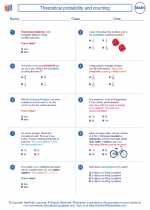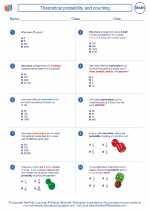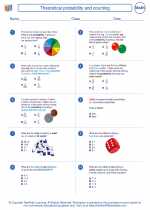Polyhedra
A polyhedron is a three-dimensional shape with flat polygonal faces, straight edges, and sharp corners or vertices. These shapes are classified based on the number of faces, edges, and vertices they have.
Types of Polyhedra
There are several types of polyhedra, including:
- Tetrahedron: A polyhedron with four faces, four vertices, and six edges.
- Hexahedron (or cube): A polyhedron with six faces, eight vertices, and twelve edges.
- Octahedron: A polyhedron with eight faces, six vertices, and twelve edges.
- Dodecahedron: A polyhedron with twelve faces, twenty vertices, and thirty edges.
- Icosahedron: A polyhedron with twenty faces, twelve vertices, and thirty edges.
Euler's Formula
Euler's formula for polyhedra relates the number of faces, vertices, and edges of a polyhedron:
F + V - E = 2
Where F is the number of faces, V is the number of vertices, and E is the number of edges.
Surface Area and Volume
The surface area and volume of a polyhedron can be calculated using specific formulas for each type of polyhedron. For example, the surface area of a cube is given by 6 * s^2, where s is the length of one side, and the volume is s^3.
Study Guide
To study polyhedra, make sure to:
- Understand the definition of a polyhedron and its components (faces, edges, vertices).
- Memorize the characteristics of different types of polyhedra, including the number of faces, edges, and vertices.
- Practice using Euler's formula to calculate missing information about a polyhedron.
- Learn the specific formulas for calculating the surface area and volume of different polyhedra.
- Work on solving problems and exercises related to polyhedra to reinforce your understanding.
By mastering these concepts and practicing regularly, you can develop a strong understanding of polyhedra and excel in related math problems and applications.
.◂Math Worksheets and Study Guides Eighth Grade. Theoretical probability and counting

 Worksheet/Answer key
Worksheet/Answer key
 Worksheet/Answer key
Worksheet/Answer key
 Worksheet/Answer key
Worksheet/Answer key
